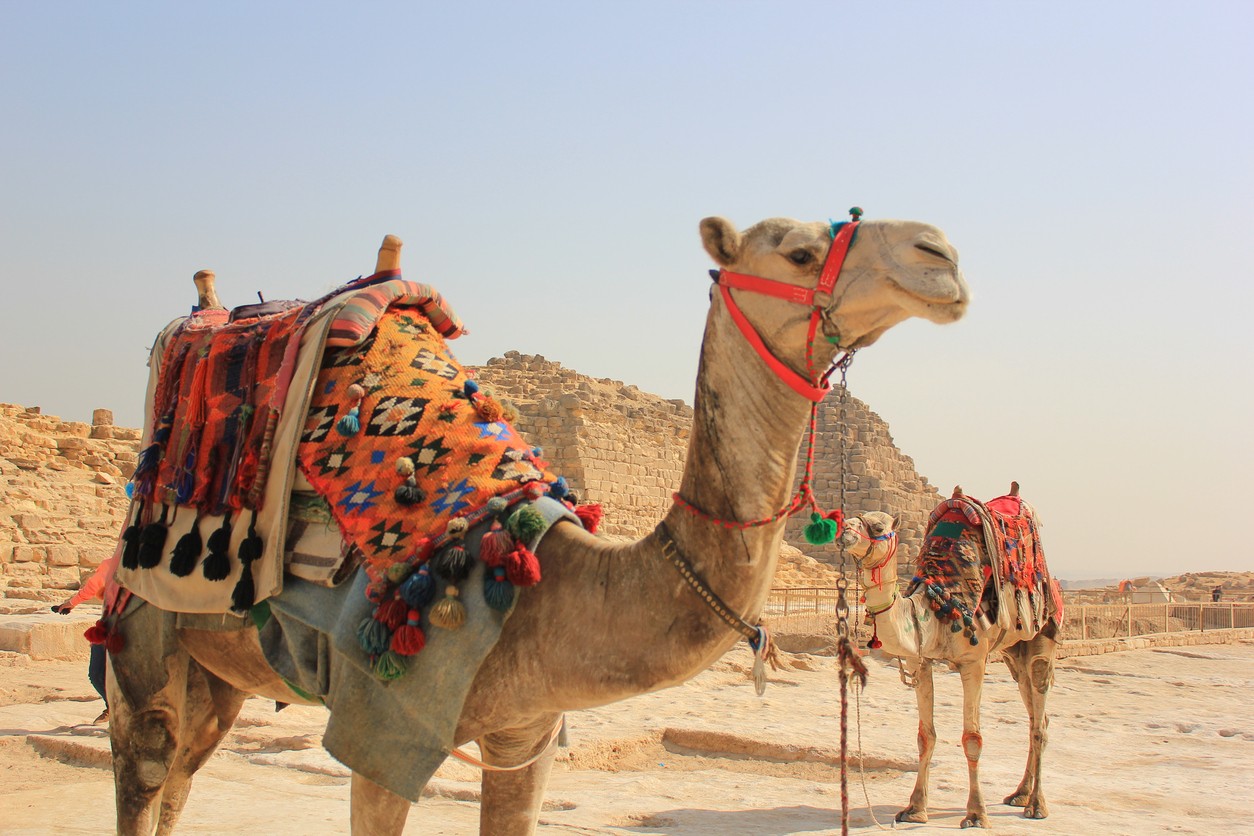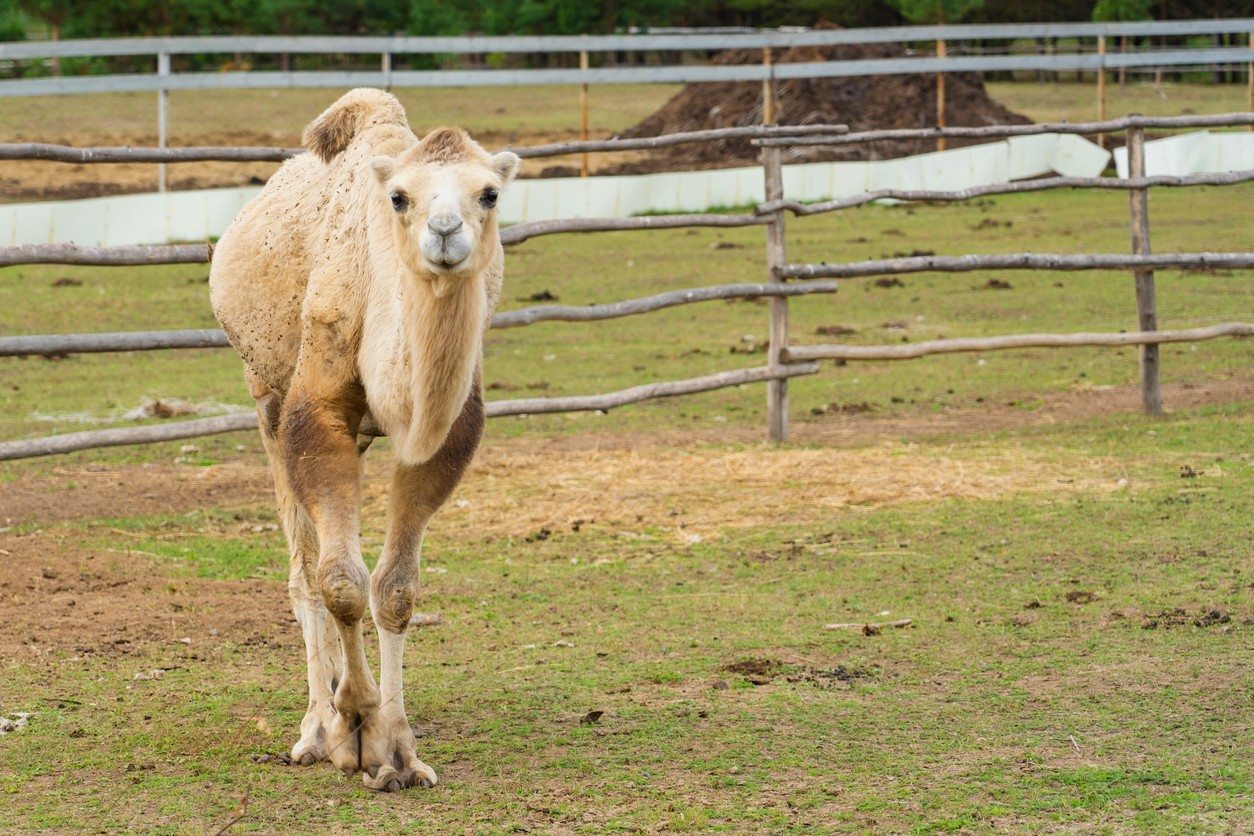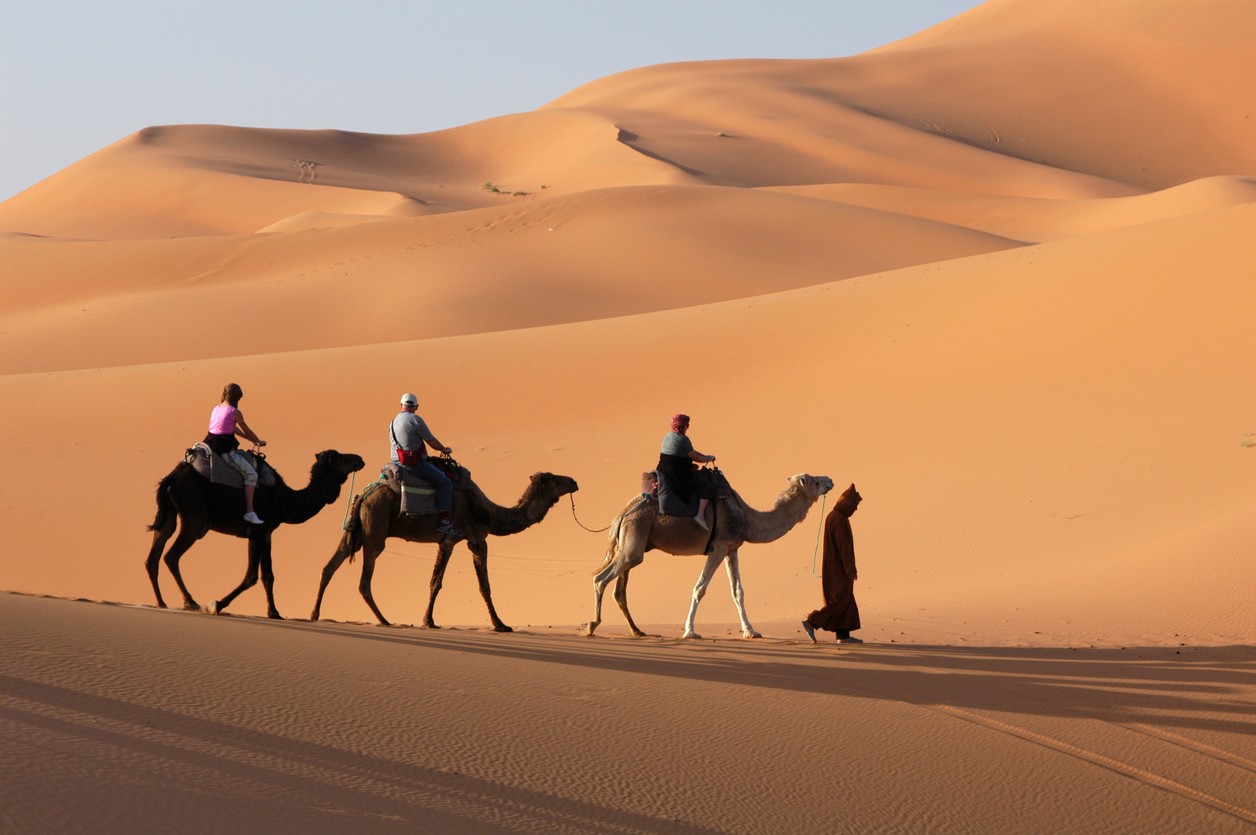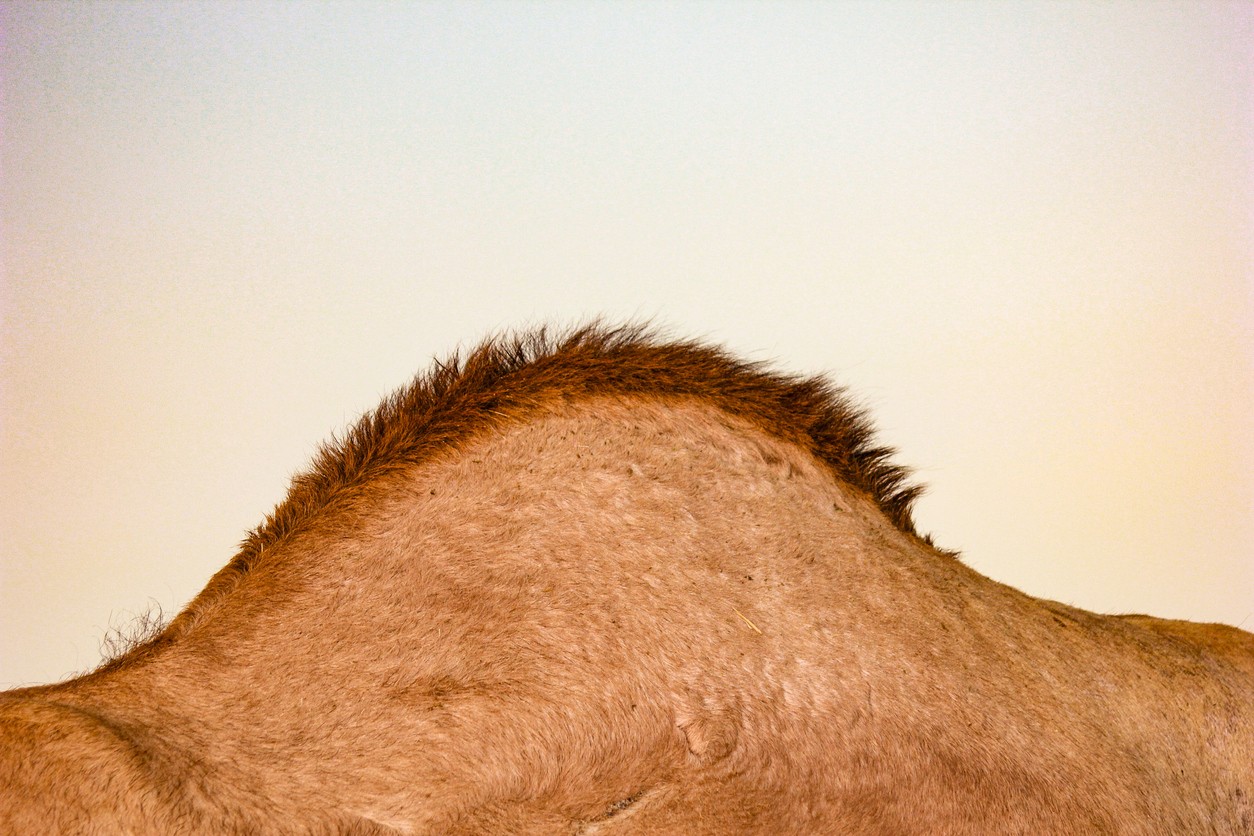Every animal has unique characteristics that make it different from other animals. A giraffe has long legs and a really long neck. A rhinoceros has a large horn on the front of its face. A tiger is a huge cat with stripes, and a zebra looks like a horse with stripes. The camel, however, is known for its large hump. Which brings us to the question, why do camels have humps anyway? What is the function of their hump? Does it really hold water? Keep reading to learn more.
One of the camel’s most distinctive features is its hump. In this post, we’ll study the camel’s hump and explore its role in the camel’s bodily processes. What is the hump’s purpose? Although they’re handy for riders to hang onto as they travel to faraway lands, there must be a better reason for camels to have them.
A Hump is a Camel’s Energy Storage
The camel’s hump is where the camel stores fat. Camels use this fat for energy when and where food is hard to find. People who buy and sell camels even use the size of the camel’s hump to determine how healthy the camel is. The bigger the hump, the healthier the camel. A well-fed camel’s hump won’t droop or look deflated.

A camel’s hump is filled with incredibly nutritious fat reserves. In fact, one tablespoon of camel fat has three times the oleic acid (a very healthy omega-9 fatty acid) as that of coconut oil. This makes it a very efficient and powerful fuel source for the camel.
Camel Humps Help Regulate Body Temperature

The temperature in the desert can be extremely hot during the day (up to 120 degrees Fahrenheit) and freezing cold at night (down to minus 20 degrees Fahrenheit). The fatty tissue in the camel’s hump provides insulation and protection in these temperature extremes, thereby helping the camel to regulate its own body temperature.
Water is Stored in a Camel’s Hump
Some people believe water is stored in the camel’s hump, making it possible for camels to travel so far without drinking water. Although camels do have a few tricks to make the most of the water they drink, storing it in their humps is not one of them.
Camels have been convenient pack animals, carrying heavy loads across the Gobi Desert and the expansive Sahara Desert. This has earned them the title of “ships of the desert.” It has also led to certain cultures and legends explaining that the camel’s hump contained water because the camel could survive without water in very harsh conditions.
How Do Camels Survive Without Water?

So, if camels don’t store water in their humps, how do they cope so well when water is scarce? They can, in fact, walk for days on end in the hot, arid desert weather without any food and go for a week or more without water. This is possible because the camel has adapted so well to its environment.
A thirsty camel can drink as much as 32 gallons of water in as little as 15 minutes. The Wild Bactrian camel can even survive on saltwater!
A camel’s body has evolved to efficiently use its water stores and make them last as long as possible. It does this by:
- Managing its body temperature. Their fat stores and thick shaggy coats act as insulators. A camel has more hair on its hump than the rest of its body, protecting its body cavity from heat. This traps the water in the body, preventing evaporation.
- Their kidneys have evolved to efficiently remove toxins from their bodies to retain as much water as possible. Their urine is not even liquid. It comes out as solid crystals! Ouch!
- Excreting dry feces to retain water.
- Catching moisture from each breath they exhale through their nose and reabsorb it into their bodies.
- Sweating infrequently.
- Dropping their body temperatures to extremely low levels at night, taking them longer in the day to heat up.
- The fat in the hump can be broken down to produce water – ten pounds of fat can be broken down into ten pounds of water.
- Camels have big, thick lips that allow camels to breathe, even in a sandstorm. Their slit upper lip prevents sand from entering their lungs.
- When camels drink, their red blood cells swell into an oval shape which is more efficient at keeping the camel’s body hydrated. Camels are essentially storing water in their blood!
Did you know that the word “camel” means “beauty” in Arabic? Their long, elegant eyelashes do give camels amazingly beautiful eyes; however, they use their eyelashes, their thick eyebrows and their eyelids to help keep sand out of their eyes. A camel has three eyelids, two of which have eyelashes. The third eyelid moves from side to side rather than up and down like the other two. It is also clear. So, when the sand is blowing, the third lid remains closed to protect the camel’s eyes and allow it to see.
As you can see, the camel has many ways to conserve water which means that it doesn’t need to store it in its hump.
One Hump or Two?
There are three species of camel. The Arabian camel or the Dromedary camel (Camelus dromedarius) is the most common type and has only one hump. Wild camels or the Wild Bactrian camel (Camelus ferus) and the domesticated Bactrian camel (Camelus bactrianus) have two humps. Despite having two humps, both species of Bactrian camels cannot go any longer without food than the Dromedary.
Dromedary camels are generally found in arid regions of the Middle East, Africa and northern India, particularly in the Sahara Desert. The Australian deserts are home to a large feral population of Dromedaries.
The main habitat of the critically endangered Wild Bactrian camel is southern Mongolia and northern China. Domesticated Bactrians, also known as Mongolian camels, are located in Central Asia.
Although there aren’t any camels in South America, there are camelids – a species of animals closely related to camels. Camelids in South America include the llama, alpaca, vicuña and guanaco.
What is in a Camel’s Hump?

During the last part of the ice age, evidence shows that early camels originally lived in most of North America, including the western United States, southwestern Canada and central Mexico. After making their way to the Yukon and Alaska, camels continued their migration to Eurasia over the Bering Strait. Today the native habitat of camels is the Middle East and some parts of Central Asia.
Camels gradually developed a hump and thick fur to help them survive the icy Arctic winters. Modern scientists believe the camel’s hump and shaggy coat help it regulate its body temperature. You see, a camel’s hump is used for fat storage. Most animals store fat around their stomachs and sides, just like us humans. Camels, however, pack on the pounds vertically in their humps.
A camel’s typical diet consists of dry grasses, foliage and desert vegetation. Their thick lips allow them to eat thorny plants found in deserts. When food is widely available, camels eat a lot. A hump develops as fat accumulates. A “full” hump can weigh as much as 80 pounds. That’s a lot of fat, but it helps them go for long periods of time without food – even up to four or five months. As they use up these fat stores, the hump begins to deflate like a balloon that’s losing air until it becomes limp and floppy.
Baby camels aren’t born with humps. In fact, they don’t begin to develop humps until they’re ten to twelve months old after they’re weaned and have started eating solid food. It’s important for young camels to develop a hump during the first twelve months of life so that they have the stores needed to make it through their first dry season.
There are a couple of theories as to why camels store fat in humps rather than around their middles. Belly fat would make it more difficult for them to lie down directly on their stomachs, which is how they lie down. Another theory is that the fat stored on top of the camel’s body insulates it and protects it from the heat of sunlight.
Camels are not the only animals with humps. Other animals that have humps include bison, moose, rhinoceros, llamas and giraffes. Many of these animals have humps because they need extra vertebrae and muscles to assist them in holding up their massive heads, whereas the purpose of a camel’s hump is to store fat.

People living in the desert depend on the camels for many purposes including:
- Travel
- Production of a milk alternative
- A source of meat
- Camel dung is used as a fuel source
- Hide and fur used in textiles
Camels are powerful and capable animals. Without them, people would have found it very difficult, if not impossible, to travel and carry goods across the harsh terrains of the desert.
Fortunately, you don’t have to travel to the desert to see a camel. You can visit one of our parks in Pine Mountain, Georgia; Stafford, Missouri; and Bryan-College Station, Texas, and judge for yourself how healthy our camels are by looking at their humps.

